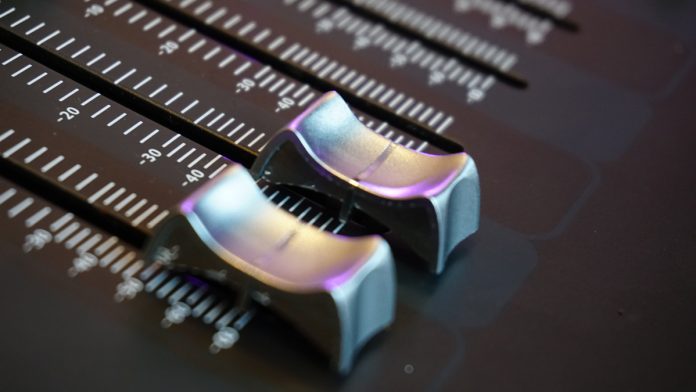In How Amplifier Technology Has Shaped Modern Music Production, engineers and artists have continually pushed creative boundaries by leveraging innovative amplifier designs. These developments have not only redefined the sonic landscape but also revolutionized recording and live performance practices. From analog roots to cutting-edge digital integration, amplifiers now serve as central components in delivering distinct tones and textures, fueling a creative revolution that resonates across genres.
| Table of Contents | |
|---|---|
| I. | Historical Evolution and Technological Shifts |
| II. | Advancements in Circuit Design and Signal Processing |
| III. | Digital Modeling and Integration with Software |
| IV. | Tonal Versatility and Harmonic Shaping |
| V. | Dynamic Range and Output Efficiency |
| VI. | Role in Live Performance and Recording Environments |
| VII. | Integration with Effects and Pedal Chains |
| VIII. | Impact on Genre-Specific Production Techniques |
| IX. | Customizability and Modular Design Innovations |
| X. | Amplifiers as Creative and Expressive Tools |
Historical Evolution and Technological Shifts
From rudimentary designs in the early 20th century to state-of-the-art systems today, amplifier technology has evolved immensely. Each innovation has redefined audio aesthetics and performance capabilities, paving the way for diverse sonic landscapes in modern recordings. Designers have steadily embraced new materials and methods, ultimately influencing production techniques and live sound reinforcement. This continuous evolution reflects the transformative journey that amplifiers have taken over decades, continuously impacting the music industry.
Advancements in Circuit Design and Signal Processing
Innovative circuit designs and advanced signal processing have revolutionized amplifier performance. Engineers have refined transistor and tube technologies, allowing for more efficient power handling and reduced distortion. In this process, How Amplifier Technology Has Shaped Modern Music Production has underscored the importance of precision in electronic components to ensure clarity and dynamic response. These technical milestones have enabled musicians to achieve unprecedented clarity and authenticity in sound reproduction while maintaining the rich character of analog warmth.
Digital Modeling and Integration with Software
Digital advancements have propelled amplifier innovation through sophisticated modeling and software integration. This progression enables emulation of vintage tones and modern flavors with remarkable precision, merging real-world analog warmth with digital convenience. Seamless integration with recording software enhances production flexibility, making it easier for producers to experiment and refine their soundscapes. Digital modeling offers a versatile palette, reaffirming the pivotal role played by amplifiers in shaping contemporary production practices.
Tonal Versatility and Harmonic Shaping
Contemporary amplifiers offer a wide spectrum of tonal options, enabling users to sculpt harmonic nuances with finesse. With adjustable parameters, musicians can personalize their sound through intricate control of tone, warmth, and overdrive. How Amplifier Technology Has Shaped Modern Music Production reflects the essential balance of clarity and character that modern producers seek. This tonal versatility allows for both faithful replication of classic sounds and innovative explorations, catering to diverse musical genres and creative visions.
Dynamic Range and Output Efficiency
Amplifiers today are engineered for superior dynamic range and efficient power output. Enhanced circuitry and optimized designs minimize unwanted noise and distortion, ensuring that musical dynamics are preserved from studio recordings to live performances. This output efficiency supports robust sound reinforcement, vital for both intimate gigs and massive concert venues. The technological improvements in power management enable reliable performance and long-term durability, further solidifying the amplifier’s role in modern music production environments.
Role in Live Performance and Recording Environments
The evolution of amplifier technology has consistently bridged studio production with live performance energy. Modern amplifiers provide consistent output quality, crucial for maintaining sonic integrity during live shows. This technological synergy ensures that sounds produced in controlled environments translate effectively onto stage. Whether in the studio or on tour, reliable amplifier performance fosters creativity by allowing artists to experiment without compromise, resulting in dynamic performances that captivate audiences worldwide.
Integration with Effects and Pedal Chains
The integration of amplifiers with effects units and pedal chains has expanded creative possibilities in sound design. Musicians can now chain pedals, processors, and digital effects, blending warmth with experimental textures. This modular compatibility enhances tonal sculpting and responsiveness while streamlining the signal path. Through such integration, How Amplifier Technology Has Shaped Modern Music Production is evident in its role as both a backbone and a creative catalyst in modern pedalboard setups, empowering artists to push sonic boundaries further.
Impact on Genre-Specific Production Techniques
Distinct genres have embraced specific amplifier characteristics to achieve their signature sounds. From the gritty distortion in rock music to the clean, articulate tones of jazz, amplifiers cater to diverse aesthetic demands. Production techniques are tailored to exploit these sonic traits, with engineers and producers fine-tuning amplifier settings to suit genre-specific styles. This specialization illustrates the expansive influence of amplifiers, reinforcing their status as indispensable tools that mold musical identity and contribute significantly to how modern music is produced.
Customizability and Modular Design Innovations
The drive for personalized sound experiences has spurred modular innovations in amplifier design. Customizable features allow musicians to modify circuits, power outputs, and tonal responses to match individual preferences. Such flexibility nurtures an experimental culture, where artists can blend legacy elements with futuristic enhancements. How Amplifier Technology Has Shaped Modern Music Production is reflected in these tailored solutions, enabling the creation of unique auditory experiences that evolve in tandem with the dynamic nature of the music industry.
Amplifiers as Creative and Expressive Tools
Today’s amplifiers transcend their technical function, serving as vital instruments for creative expression. Beyond mere sound reproduction, these devices imbue performances with personality and emotion. They act as catalysts for artistic innovation, enabling musicians to explore diverse tonal landscapes and push performance boundaries. By merging art with engineering, amplifiers have become powerful storytelling mediums that influence every facet of music creation and curation, illustrating their enduring legacy in How Amplifier Technology Has Shaped Modern Music Production.

